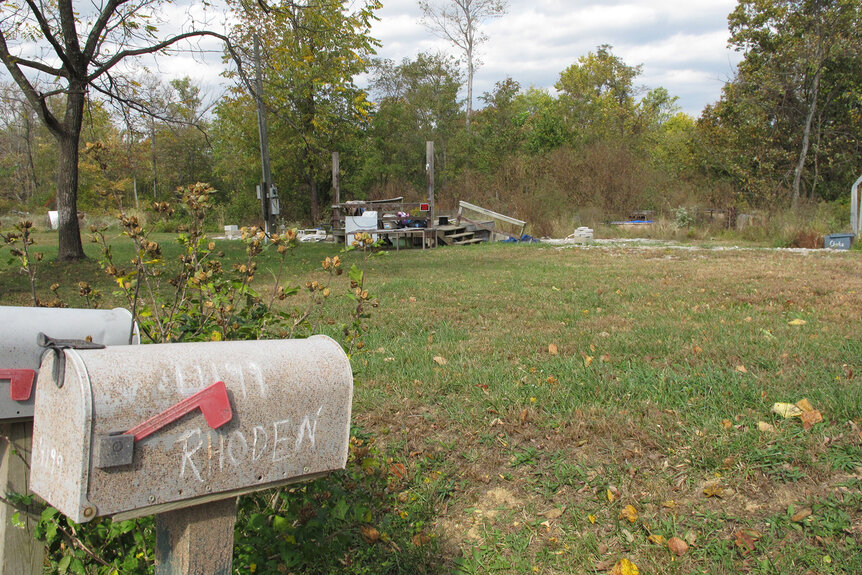Create a free profile to get unlimited access to exclusive videos, breaking news, sweepstakes, and more!
Why the Pike County Murders Crime Scenes Were Moved and How That Could Further Complicate the Case
“This case is so very haunting,” forensic expert Joseph Scott Morgan told Oxygen.com.
Eight murders. Four crime scenes. And one blood-soaked night that will forever haunt Ohio.
In April of 2016, eight members of the Rhoden family were mercilessly massacred, execution-style, while they slept. The slayings — at the center of the three-part Oxygen special, The Pike County Murders: A Family Massacre — left a lasting scar on small-town Ohio and today remains the state’s most notorious murder case.
Hannah May Rhoden, 19; Christopher Rhoden Sr., 40; Dana Manley-Rhoden, 37; Christopher Rhoden Jr., 16; Frankie Rhoden, 20; his fiancée Hannah Gilley, 20; Kenneth Rhoden, 44; and Gary Rhoden, 38, were all fatally shot in the attacks, which prosecutors contend were perpetrated by several members of a local family the Rhodens had once been close with.
Officials say the Wagner family carried out the murders as part of a bitter custody battle between former couple Hannah Rhoden and Edward “Jake” Wagner.
The case’s mythos has only grown over the years. The murders, which unfolded at four separate crime scenes, and left no witnesses or DNA, has fascinated legal pundits, forensic experts and armchair detectives across the country.
“This case is so very haunting for me,” Joseph Scott Morgan, a career death investigator and an associate professor of applied forensics at Jacksonville State University, told Oxygen.com.
The "Most Complicated Murder Case"
Morgan, who spent 14 years as a senior investigator for the Fulton County Medical Examiner's Office in Atlanta and hosts his own iHeart radio podcast called Body Bags, calls the Pike County massacre the “most complicated murder case” he’s analyzed in his forensic career.
“Let's just say, 50 to 75 years from now, when there are kids sitting around a campfire, camping out somewhere, there will be ghost stories that will arise from this case, from this tale,” said Morgan, who’s featured on Oxygen’s documentary series, The Pike County Murders: A Family Massacre, premiering November 24 at 8/7c p.m. with two episodes, and continuing with a third episode on November 25 at 9/8c p.m.
RELATED: How to Watch The Pike County Murders: A Family Massacre
The case’s complexity, he said, stems largely from the unusually high number of crime scenes in the case. The Rhodens were killed in and around three trailers and one camper. Preserving four different crime scenes — as trial proceedings continue to play out to this day in connection to the infamous case, and over the course of more than seven years — has proved tricky and presented logistical woes for investigators.
“You might look at it and say, well, it's just a structure,” Morgan said. “No, it's not just a structure. It is a piece of evidence. It contains other pieces of evidence, and it contains indications of what had happened on that horrible night. These are big pieces of evidence.”
Why were the Pike County murders crime scenes moved?
Notably, since the gruesome murders, the four structures have been moved twice, in attempts to properly secure and preserve the crime scenes while trial proceedings play out, WCPO-TV reported.
In the weeks following the killings, the campers and trailer where the Rhodens were slain were boarded up and towed from Union Hill Road and Left Fork Road to be stored at a chemical processing warehouse in the city of Waverly. The trailers’ storage drew widespread criticism in 2016, however, when media reports showed photos and videos of the warehouse’s back entrance completely open, with the trailers in plain view.
The mobile dwellings were later relocated again in 2017, due to the pending foreclosure of Hadsell Chemical, and were ultimately moved to a pole barn inside a fenced Pike County Sheriff’s impound lot.
But the move didn't come cheap. The pole barn that was used to house the crime scenes cost the county more than $95,000, according to WCPO-TV.
RELATED: The Pike County Massacre: What’s Going on with George "Billy" Wagner’s Murder Trial?
Morgan, however, remains puzzled by officials' decision to move the trailer crime scenes not once, but twice.
What complications could arise from moving the Pike County murders crime scenes?
“You've removed the trailers from the physical location where the crimes were committed,” Morgan said. “Now you've taken everything out of context. And the dwellings themselves have readjusted... how do you know that everything in the trailer's not going to shift?”
Morgan is concerned the two moves may have compromised the integrity of the structures, and possibly crime scene evidence itself — and from a forensic point of view, he says, this is less than optimal. Morgan explained that once authorities removed the trailers from their location at the time of the murders, “the framework within the home itself is going to adjust slightly with every little movement.”
“Going down the road, you might run off the road, you might hit a pothole, you might have to come to a sudden stop,” he added. “I think, from a forensic standpoint... what are you gaining by doing this that you could not have accomplished at the scene?”
Morgan also cited Pike County’s narrow, and sometimes neglected, washed out gravel roads, which he’s personally driven on. The forensic expert recalled frequently pulling off the road to make way for approaching machinery and farm equipment. These roadways would have been used to ferry the structures between the various locations used to house them.
RELATED: Why Drug Cartels Were Initially Suspected in the Pike County Murders
The move to relocate the crime scenes twice, Morgan said, could prove devastating and potentially thwart prosecutors' efforts (though it hasn’t so far) to put the Rhodens’ killers behind bars, particularly when it comes to ballistic analysis. In total, 32 rounds were fired into the eight Rhoden family victims, according to the Cincinnati Enquirer.
“If you're trying to determine trajectories on gunshots, if you've got rounds that are passing through a wall or through a door, your lines of trajectory are going to be thrown off slightly by this,” Morgan said. “... It's not going to be in its pristine shape. So if you're going to do that at some location, you know, things can be thrown off by several millimeters just by moving it down the road.”
So far, three members of the Wagner family have been sentenced in connection with the Rhoden family killings. A fourth is still awaiting trial.
All three episodes of The Pike County Murders: A Family Massacre can now be viewed on Oxygen. They will also be available to stream on Peacock starting November 28.

































